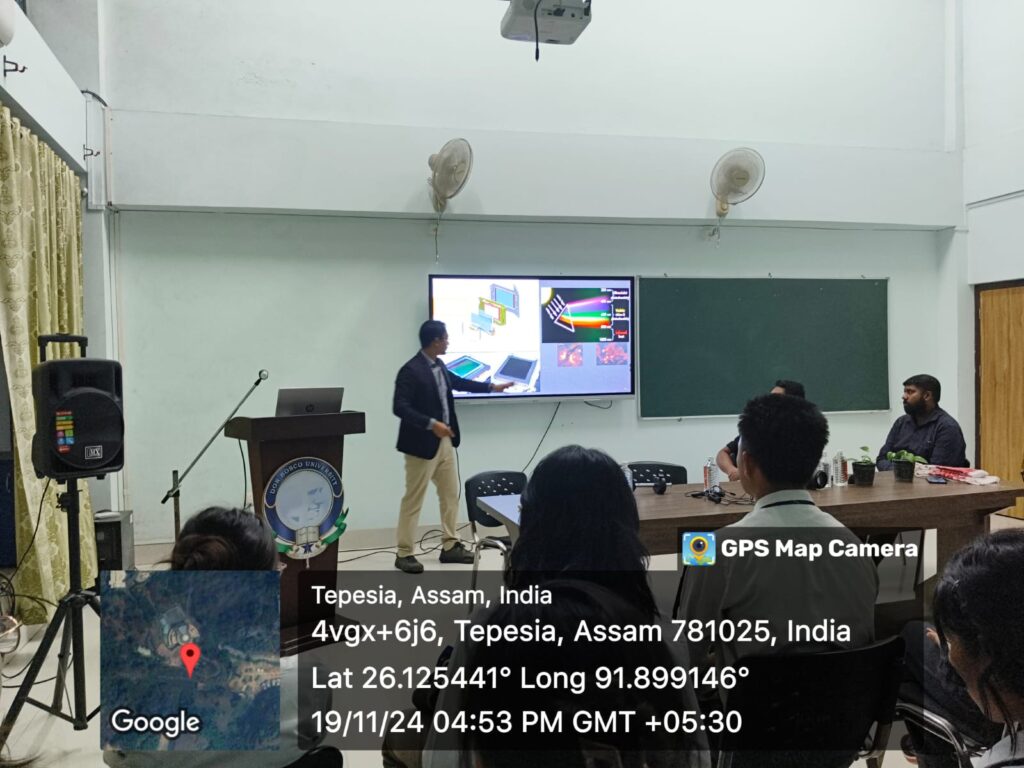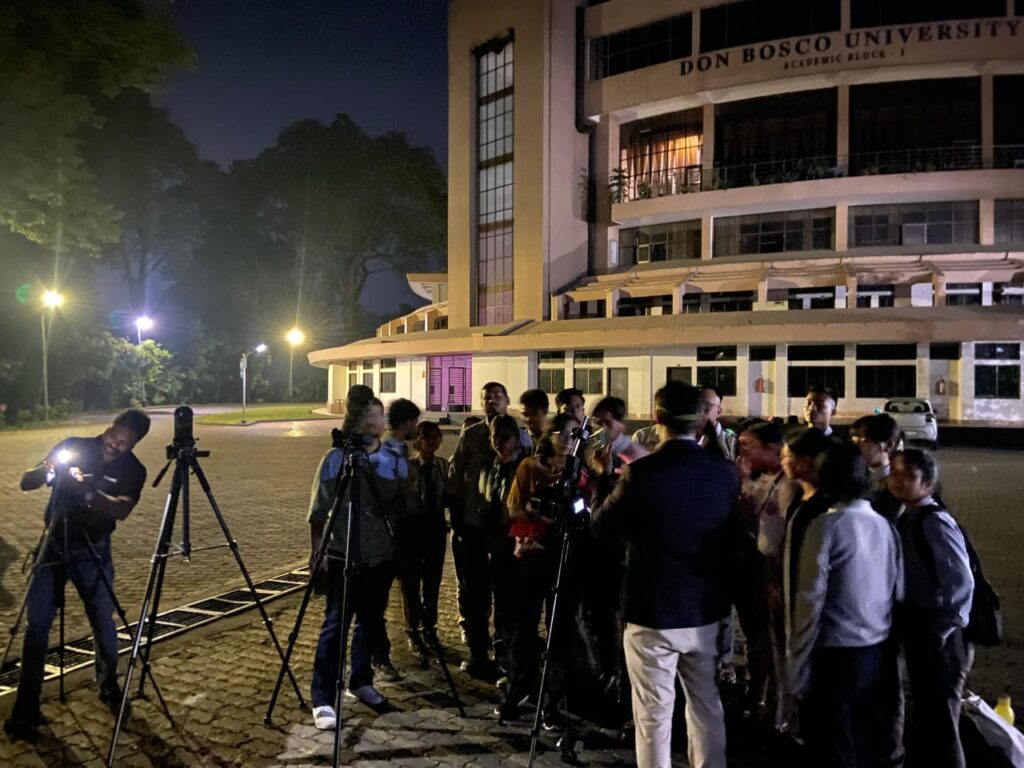The Astronomy Club in collaboration with the Department of Physics conducted an Astro-photography Workshop on the 19th of November, 2024, at Academic Block 1, Tapesia Campus. The workshop aimed to introduce participants to the wonders of astrophotography, learning about the techniques, tools and tips to capture the breathtaking beauty of the night sky. This event catered to both beginners and amateur astrophotographers, fostering a deeper appreciation of the cosmos through photography. The workshop began with a welcoming address by Rumaya, President of Astronomy Club and also felicitating the Resource persons and the CANON Ambassadors from Guwahati. The latter time was handed over to the resource persons and they carried the workshop till the end.
The first session began with an introduction to astrophotography by Mr. Neeraj K Phookan, Asst. Professor (Assam Don Bosco University). The essential camera settings such as ISO, Aperture, Shutter speed, composition, etc. were clearly explained with image examples enriching the minds of the participants of the need of a proper camera setting.
The second session was handed over to Dr. Arunava Borah, Asst. Professor (Jorhat
Medical College & Hospital). In this session, the participants were taught how to operate the camera (DSLR) and its corresponding components which are used in the photography process. Bortle scale, Real-time simulation, intervalometer, framing, etc. were introduced. The participants were also taught how to edit the captured images through effective applications.
The Hands-on session was held in the Block 1 parking lot under clear skies, where the participants were given the opportunity to apply the knowledge gained from the former sessions. Key activities included:
✓ Setting up the cameras with the tripod.
✓ Capturing star trails, constellations and deep-sky objects like nebulae and galaxies.
✓ Focusing on low light and tracking celestial motion.
During the session, certain types of cameras and different settings were set for the participants to see the functions of every setting and observe in a variety of visions. Multiple constellations, nebulae, planets, etc. were observed. One of the most fascinating views was the Jupiter and its moons. This hands-on session truly boosted the interest of the students in astrophotography.
Participants expressed enthusiasm for the workshop, appreciated the interactive sessions and expert guidance, and considered the time devoted truly worthwhile.
The Astrophotography Workshop was a resounding success, achieving its objective of equipping participants with the skills to explore astrophotography. By combining theory, practice and post-processing techniques, the event fostered a deeper connection between attendees and the wonders of the night skies.


